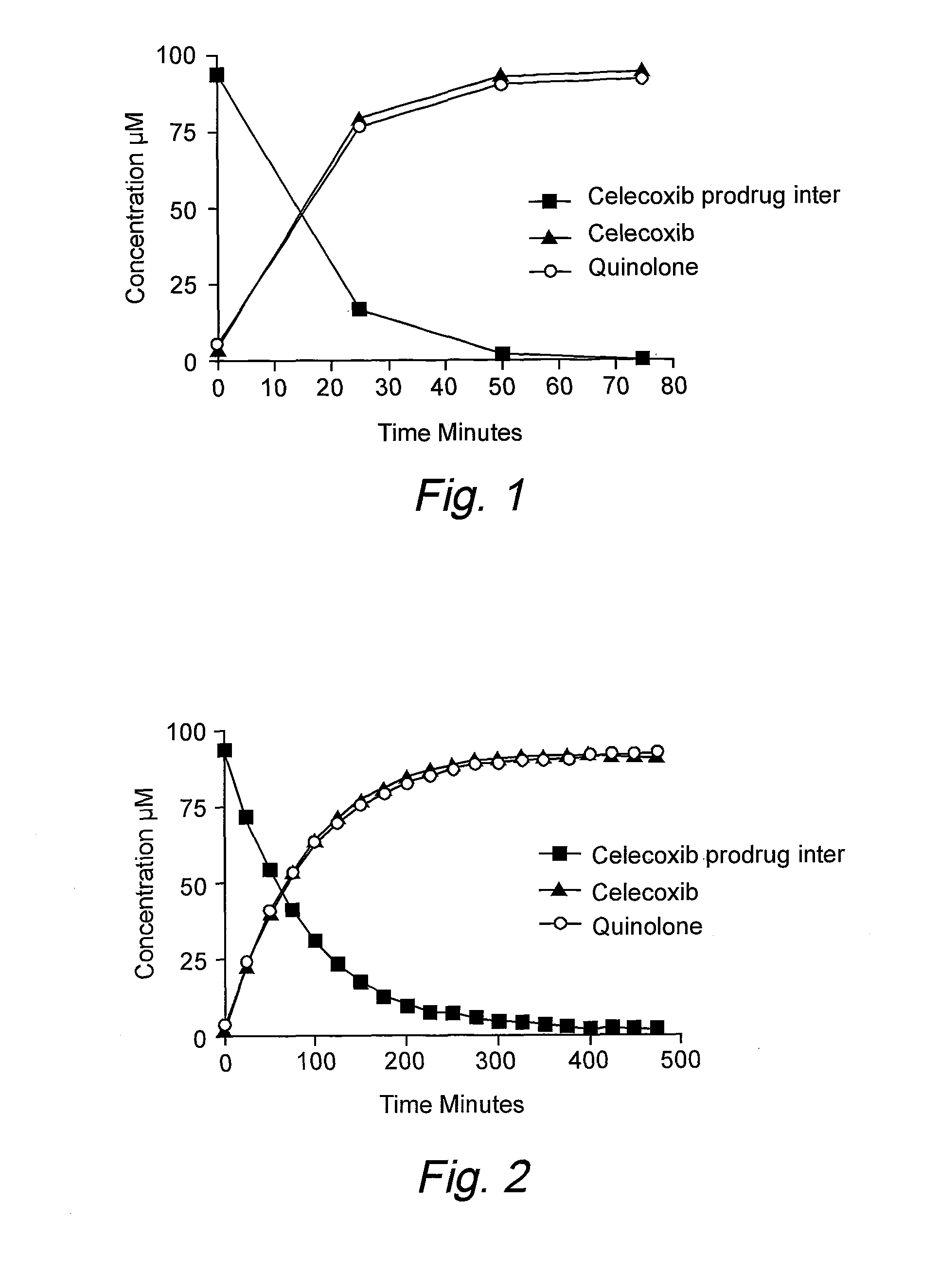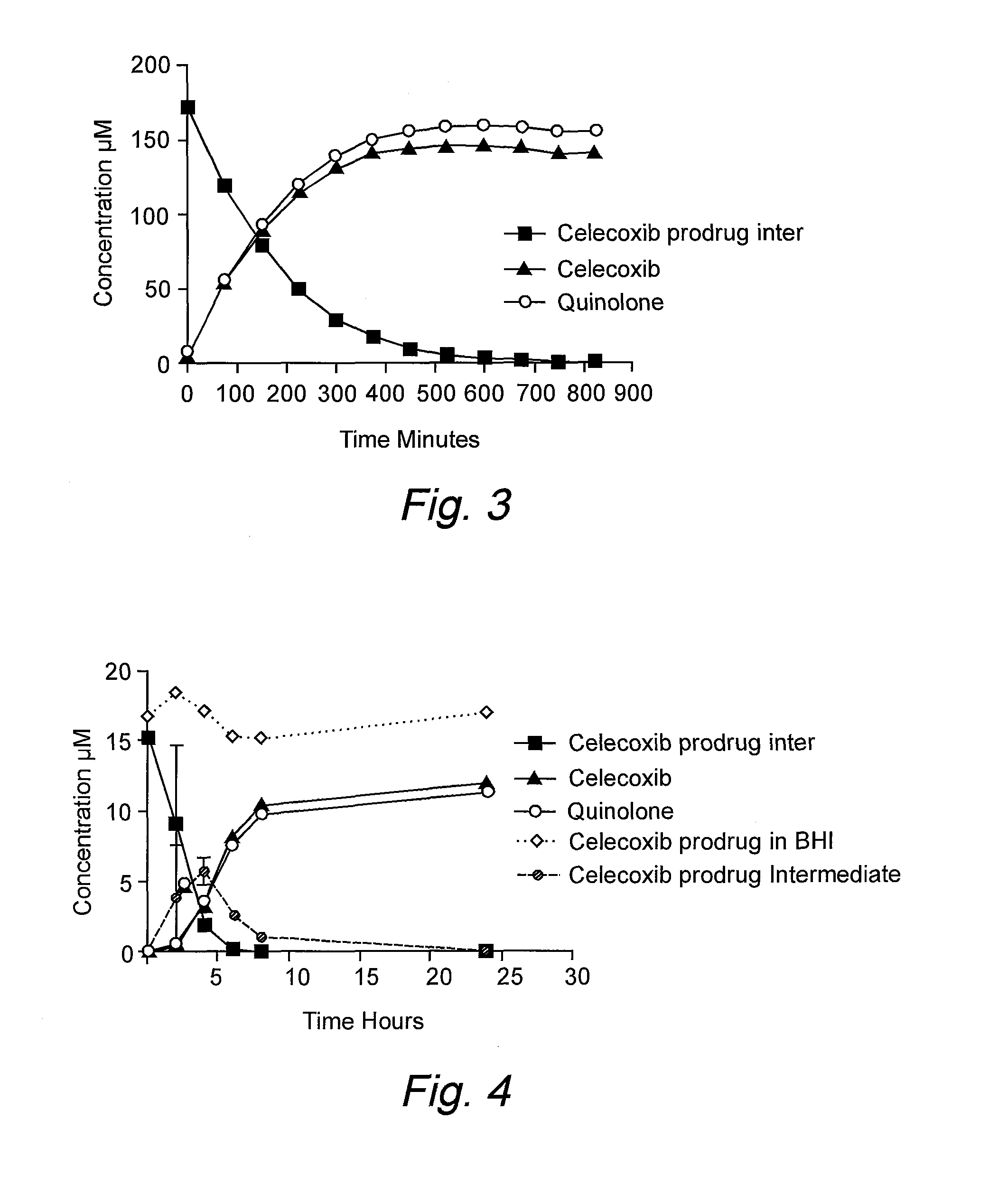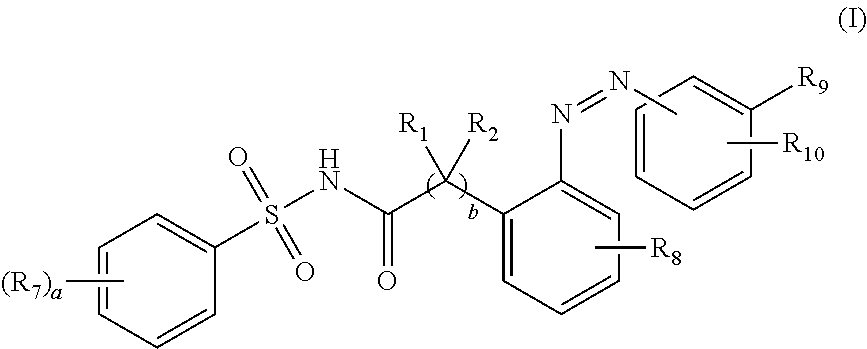Targeting prodrugs and compositions for the treatment of gastrointestinal diseases
- Summary
- Abstract
- Description
- Claims
- Application Information
AI Technical Summary
Benefits of technology
Problems solved by technology
Method used
Image
Examples
example 1
Celecoxib Prodrug Analogue (PC1) Using 5-ASA
5-Nitrosalicylic acid dioxin-4-one
[0107]5-Nitrosalicylic acid (20 g, 109 mmol) was placed in a 500 ml round bottom flask equipped with a magnetic stirrer and a reflux condenser, 200 ml of trifluoroacetic acid was added followed by trifluoroacetic anhydride (45.5 ml, 328 mmol) and dry acetone (16.0 ml, 218 mmol). The reaction mixture was left at reflux for two hours. A further 8.02 ml of dry acetone was dropped to the boiling solution every hour (1 eq. per hour) until reaction is complete within eight hours. The reaction is then concentrated under reduced pressure at about 55° C. bath temperature, toluene was added and remove three times to eliminate any trifluoroacetic acid traces and finally the solid residue was dried under vacuum for one hour at 45° C. The crude brownish solid was recrystallized twice from a mixture of acetone-petroleum ether (1:4), to yield 20.5 g of off-white crystals (84.1%). (Alternatively flash chromatography can b...
example 2
Celecoxib Prodrug Analogue (PC2) Using PABA Instead of 5-ASA
[0131]Attaching a different carrier to celecoxib yielded an analogue of PC1 hereinafter PC2. 4-aminobenzoic acid (PABA) was used, and the azo group was formed attaching the amino group and the nitroso of the 2-nitrosophenylpropionic acid. The scheme of the PC2 synthesis is described hereinafter.
[0132]The coupling to celecoxib was carried out in the same synthetic pathway previously used for PC1.
Experimental Procedure
(E)-tert-butyl 4-((2-(3-oxo-3-(2-(p-tolyl)-4-trifluoromethyl)cyclopenta-2,4-dien-1-yl)phenylsulfonamido)propyl)phenyl)diazenyl)benzoate
[0133]Into a round bottom flask was added the azo carrier (0.21 mmol, 0.076 g), t-BuOH (3 ml), ClCH2CH2Cl (3 ml), DMAP (3 eq, 0.64 mmol, 0.078 g), P-EDC (1.03 g) and the celecoxib (0.7 eq, 0.15 mmol, 0.06 g). The resulting mixture was allowed to stir at room temperature for 24 hours. The reaction mixture was then diluted with EtOAc (4 ml), and Amberlyst-15 (1.58 g) was added to t...
PUM
| Property | Measurement | Unit |
|---|---|---|
| Molar density | aaaaa | aaaaa |
| Molar density | aaaaa | aaaaa |
| Molar density | aaaaa | aaaaa |
Abstract
Description
Claims
Application Information
 Login to View More
Login to View More - R&D
- Intellectual Property
- Life Sciences
- Materials
- Tech Scout
- Unparalleled Data Quality
- Higher Quality Content
- 60% Fewer Hallucinations
Browse by: Latest US Patents, China's latest patents, Technical Efficacy Thesaurus, Application Domain, Technology Topic, Popular Technical Reports.
© 2025 PatSnap. All rights reserved.Legal|Privacy policy|Modern Slavery Act Transparency Statement|Sitemap|About US| Contact US: help@patsnap.com



